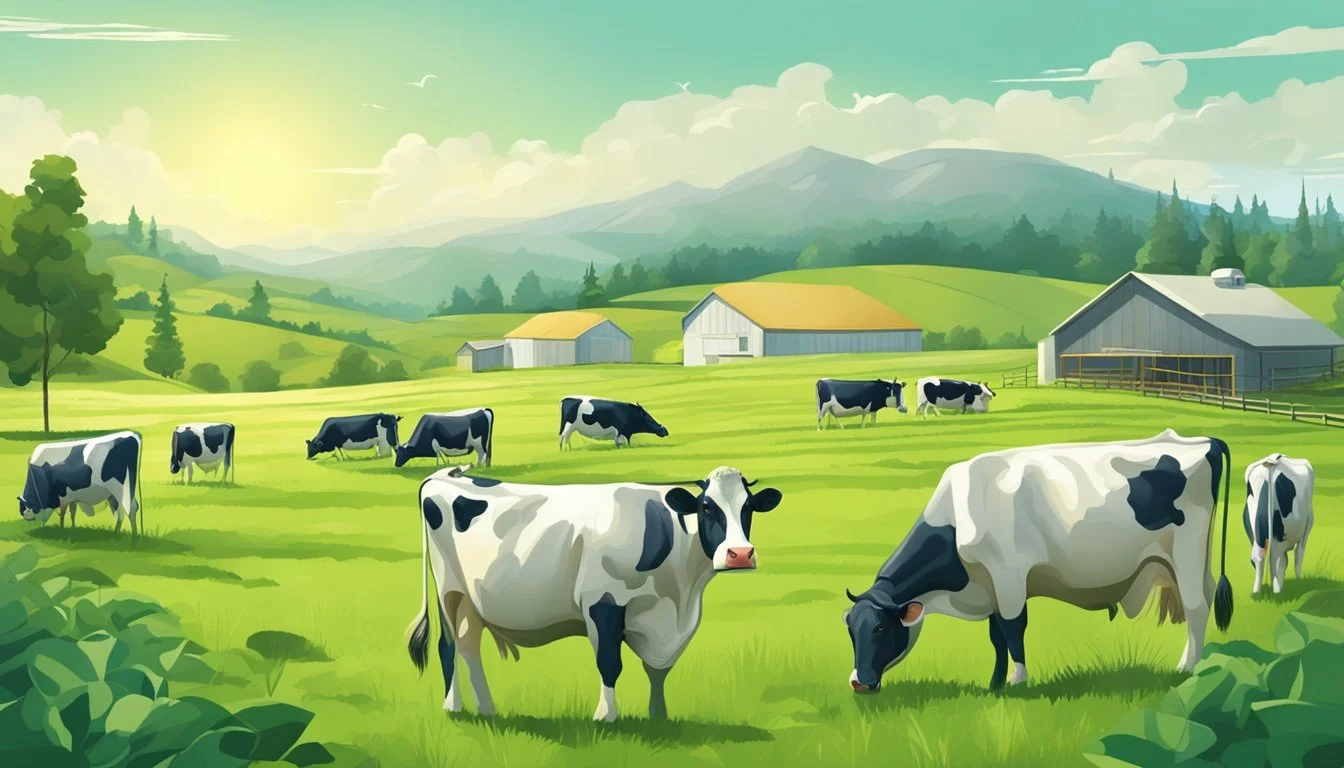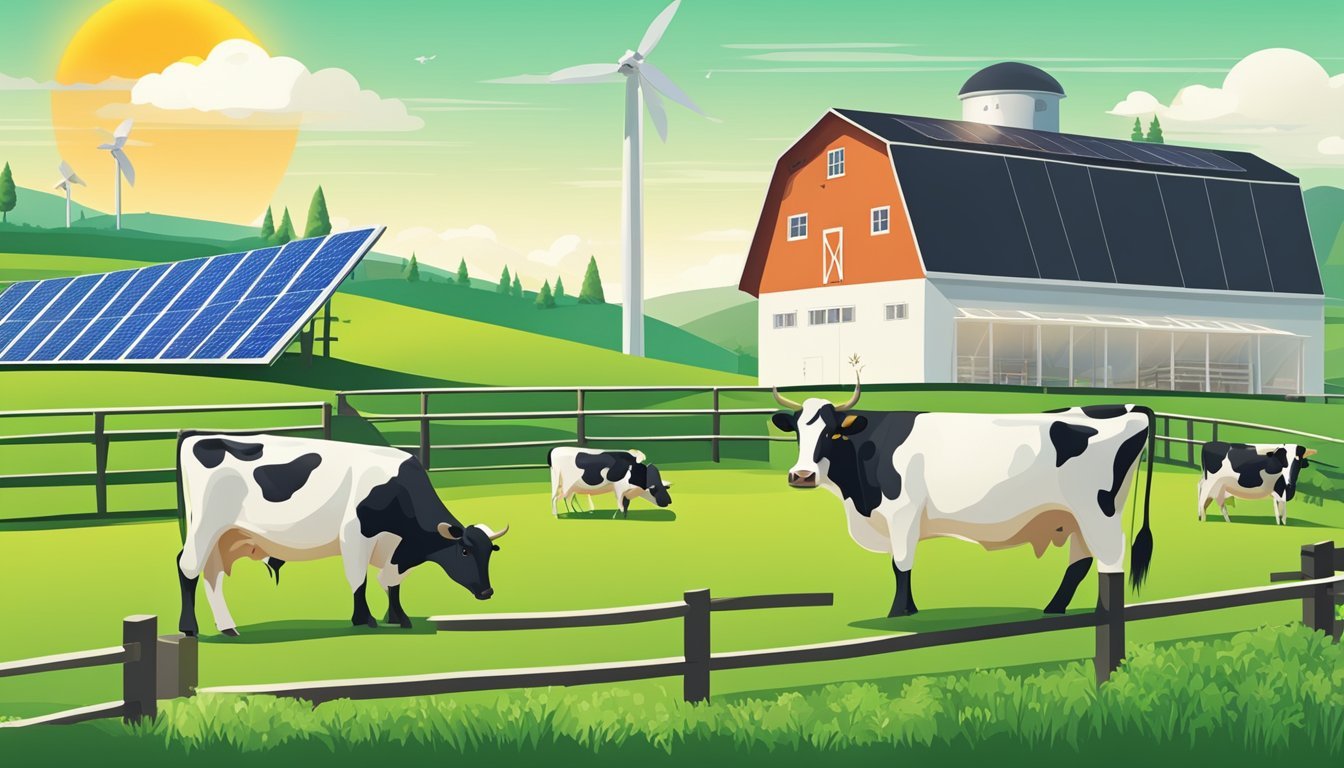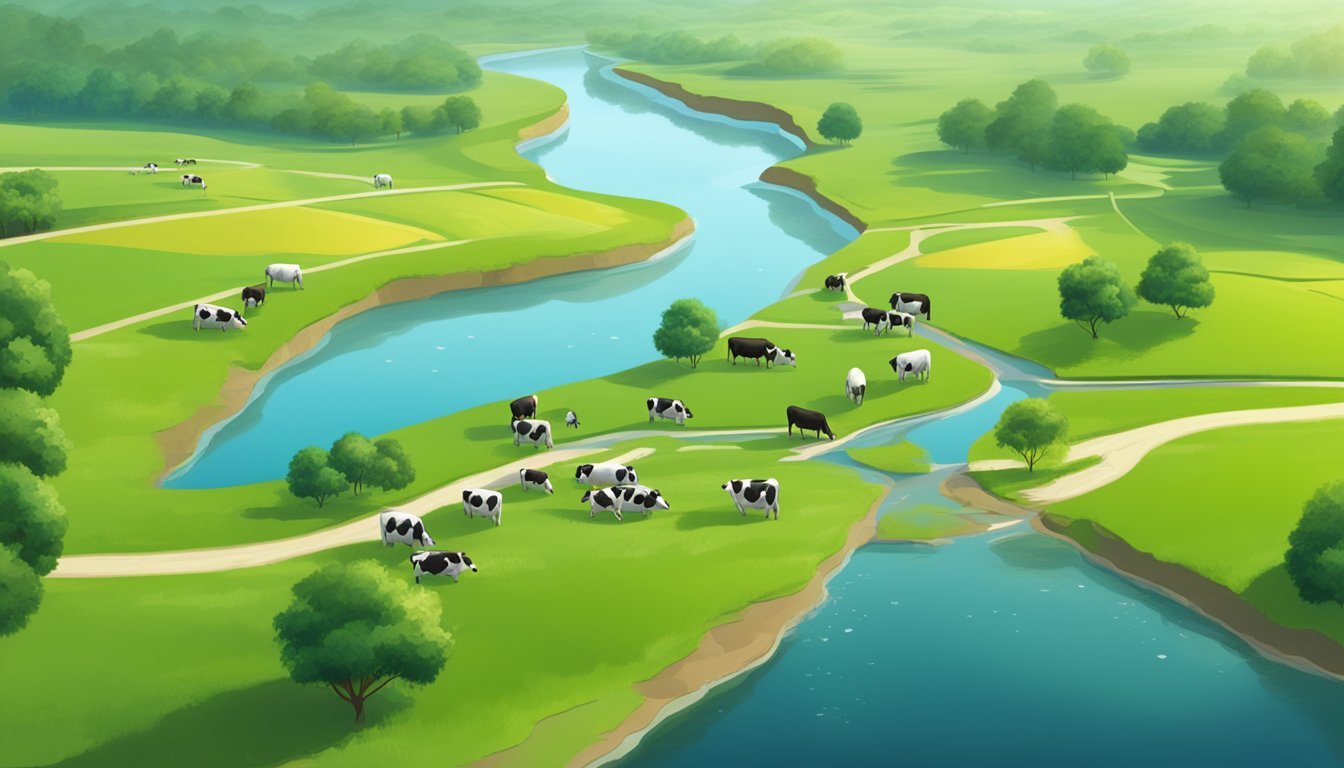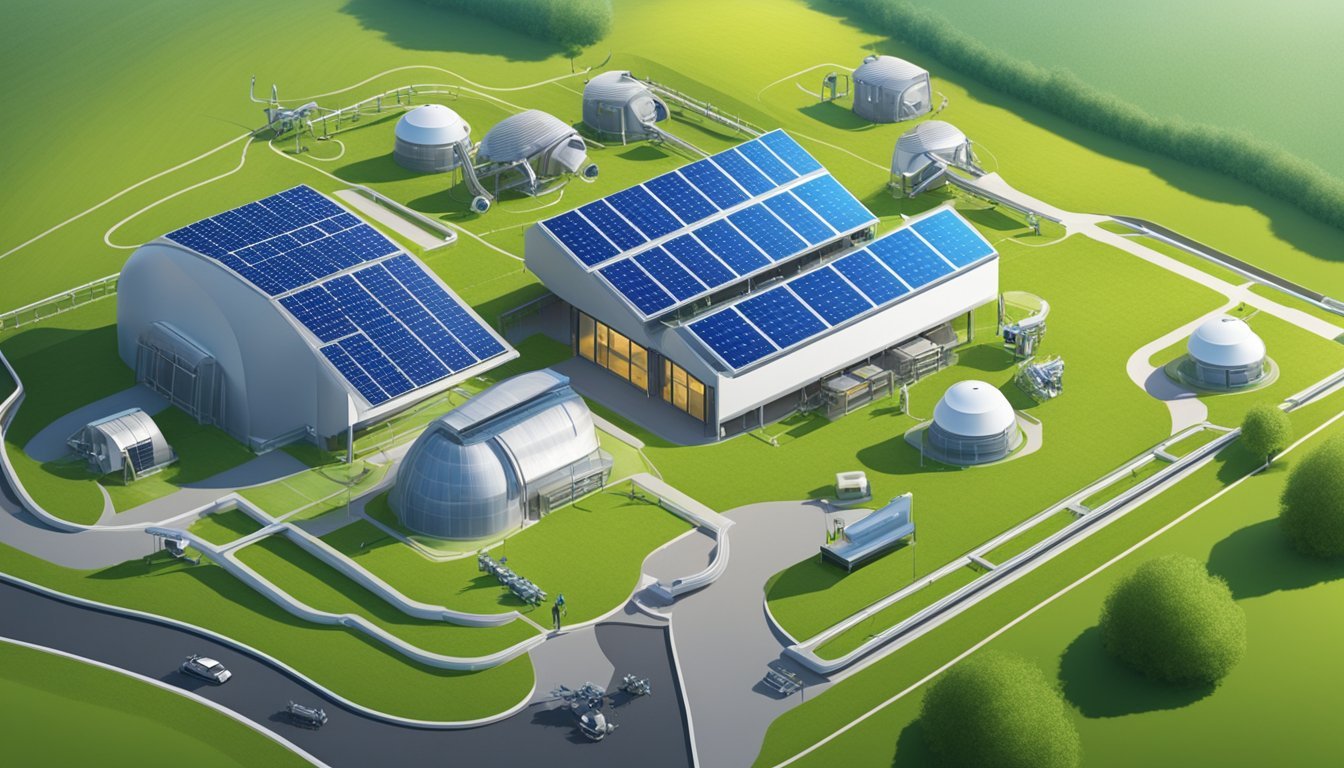The Environmental Impact of Raw Milk Production
Assessing Sustainability and Challenges
The production of raw milk is an integral part of the global agricultural landscape, offering significant nutritional benefits and economic value. Nonetheless, it comes with a sizeable environmental footprint that is drawing increasing scrutiny from both scientists and consumers. The process of milk production involves a chain of activities, from growing feed for dairy cows to managing waste, all of which contribute to environmental pressures. These pressures include greenhouse gas (GHG) emissions, land degradation, water consumption, and pollution.
Dairy farming, on one hand, has been shown to be a notable contributor to GHG emissions, with the production of raw milk accounting for a considerable percentage of these emissions within the dairy sector. Factors such as enteric fermentation in cows, manure management, and the production of feed significantly add to the carbon footprint of milk. On the other hand, the industry is also facing challenges related to water usage, both in terms of sheer volume and potential contamination from agricultural runoff.
Efforts are being made to mitigate these environmental impacts through the adoption of sustainable production practices, innovative technologies, and reduction of waste. These initiatives aim to improve the environmental sustainability of milk production without compromising the substantial role that dairy plays in the global food system and economy. With milk serving as an essential source of nutrition and livelihood for millions worldwide, reconciling its environmental impact with its societal value is imperative for the long-term sustainability of the industry.
Raw milk production has gained attention not only for its nutritional value but also for its potential environmental impact, drawing interest from enthusiasts and contributing to the emergence of raw milk tourism. The process of introducing a raw milk diet has sparked conversations about sustainable agricultural practices and ethical considerations, aligning with the ethos of raw milk advocacy.
Dispelling raw milk safety myths is crucial in fostering a deeper understanding of the product's environmental footprint, as advocates emphasize the benefits of raw milk for individuals with raw milk lactose intolerance and its diverse culinary applications, including the process of making raw milk butter.
The environmental impact of raw milk production is intertwined with considerations of land use, animal welfare, and sustainable farming methods. As interest in raw milk continues to grow, the promotion of responsible and eco-conscious practices within the industry can contribute to a positive environmental influence, aligning with the principles of ethical and sustainable food production.
Overview of Raw Milk Production
Raw milk production is a critical component of global food security and involves complex processes, market dynamics, and significant contributions from key countries. The industry's environmental impact is gaining attention due to the integral role dairy cows play in global food systems.
Global Milk Production Statistics
The worldwide production of milk encompasses a diverse group of mammals; however, dairy cows are the dominant source. In 2017, global milk output from cows, buffaloes, and other livestock reached substantial volumes, with India leading at approximately 20% of the world's supply followed closely by the United States at 12%. These numbers reflect the importance of milk as a staple commodity.
India: Largest producer - 20%
USA: Second-largest producer - 12%
China, Brazil, and European countries also significantly contribute to the sales volume in the international dairy market.
Key Players in the Dairy Industry
The dairy industry's key players are countries that have optimized their production and distribution systems to meet high demand. The United States, as one of the top producers, secures a dominant position in the global market. Europe, with its advanced dairy technologies and stringent quality controls, contributes significantly as well. India's dairy sector thrives primarily due to its vast bovine population, while Brazil and China are rapidly growing entities in the market.
Milk Production Processes
The production process begins at the farm, where environmental impacts are first measured. Dairy production systems vary globally and are influenced by geographical location and management practices. The life cycle analysis (LCA) often evaluates cumulative greenhouse gas (GHG) emissions up to the farm gate, emphasizing the early stages of milk's journey from source to sale.
In dairy operations, milk is:
Extracted from the dairy cows.
Stored and cooled on-farm.
Transported to processing facilities.
Undergoes pasteurization, homogenization, and sometimes further processing into dairy products.
Finally, it is packaged and distributed for sales volume across markets.
Environmental Challenges of Dairy Farming
Dairy farming plays a critical role in global food security but poses significant environmental challenges, notably through greenhouse gas emissions, water and land resource usage, and potential soil degradation.
Greenhouse Gas Emissions
Dairy production is a significant source of greenhouse gases (GHGs), contributing to climate change. Chief among these emissions are methane from enteric fermentation in ruminant digestion and nitrous oxide from manure management. Collectively, milk production contributes approximately 3-4% of anthropogenic GHG emissions globally.
Methane Emission: Methane has a global warming potential that is roughly 25 times greater than that of carbon dioxide over a 100-year period.
Nitrous Oxide: Emissions from dairy farming arise through the use of nitrogenous fertilizers and the handling of animal waste products, which can lead to soil release of this potent greenhouse gas.
Water Use and Management
The dairy industry is water-intensive, using large volumes for animal husbandry, crop irrigation, and processing of milk products.
Water Consumption: It requires about 628 liters of water to produce one liter of milk when considering the entire production lifecycle.
Eutrophication: Improper management of livestock waste can lead to nutrient runoff, particularly phosphorus and nitrogen, causing eutrophication in water bodies.
Land Use and Soil Degradation
Dairy farming has a substantial land use footprint due to the need for pasture and feed crop production.
Environmental Footprint: Conversion of land for agricultural use can lead to loss of habitats and biodiversity.
Soil Health: Intensive farming practices can contribute to soil degradation, reducing its productivity and resilience against erosion.
Raw Milk's Carbon Footprint
Raw milk production significantly contributes to global greenhouse gas emissions, with crucial factors being methane and nitrous oxide from cattle and carbon dioxide generated during transport and storage processes.
Methane and Nitrous Oxide Emissions
Methane (CH₄) is a potent greenhouse gas released during the digestive process of dairy cows, known as enteric fermentation. The carbon footprint of milk production is largely impacted by methane emissions, which can be influenced by the feed type and quality. Diets rich in forages tend to produce more methane compared to those with higher concentrates. Nitrous oxide (N₂O), another significant greenhouse gas, is primarily emitted from manure management and fertilizer application. The use of synthetic fertilizers in feed production and the handling of manure in lagoons or storages contribute to these emissions.
Table 1: Greenhouse Gas Contributions in Dairy Production
Greenhouse Gas Source Impact on Carbon Footprint Methane Enteric fermentation, Manure High Nitrous Oxide Fertilizer use, Manure storage Medium Carbon Dioxide Transport, Refrigeration Variable
Carbon Dioxide from Transport and Storage
Once raw milk is produced, it must be distributed to processing facilities, which entails the use of transportation vehicles that emit carbon dioxide (CO₂). The carbon footprint of this phase depends on the distance traveled and the efficiency of the vehicles used. Past the transportation stage, raw milk requires pasteurization and refrigeration for safety and extended shelf life. The energy consumed in these processes, often derived from fossil fuels, contributes further to the carbon footprint of milk. Efficient refrigeration systems and renewable energy sources can help mitigate the carbon footprint associated with these stages.
Refrigeration: Essential for maintaining milk quality, yet energy-intensive.
Transport: Distance and vehicle efficiency are key determinants of emissions.
Feeding Systems and Their Impact
The type of feed used in dairy farming plays a critical role in determining the environmental impact of milk production. It directly affects both methane emissions from livestock and the overall health of the animals.
Impact of Feed Choices
Feed choices are pivotal in livestock production as they can alter the amount of methane emissions, a potent greenhouse gas. Grass silage and maize silage are common in dairy diets and can influence methane outputs through enteric emissions. Studies suggest that diets high in forage, like grass silage, can lead to higher methane emissions per unit of milk produced when compared to feeds such as soy, oat, or rice.
Soy-based feeds: Can reduce enteric methane but involve concerns about land use changes.
Oat and rice: Less common but considered in regions where they're grown prolifically.
Feed efficiency is also essential; it measures the animal's ability to convert feed into milk. Improvements in feed efficiency can lessen the environmental footprint by reducing the feed required per unit of milk produced.
Animal Nutrition and Health
Animal health and nutrition are deeply intertwined with feed composition. Diets must meet the nutritional needs of dairy cows to maintain their health and optimize milk production. Balances of protein, energy, minerals, and vitamins are crucial.
Optimal nutrition reduces the risk of diseases and boosts milk yield.
Genetics can play a role in how well animals utilize different types of feed.
Diet quality affects not only the health of the cows but also the efficiency of the milk production system. Improved animal health leads to better longevity and productivity, making the system more sustainable.
Sustainable Practices in Dairy Farming
With a shifting focus on sustainability, dairy farming is increasingly incorporating practices to reduce environmental impacts. This section delves into the systems and technologies contributing to more eco-friendly dairy production.
Dairy Farming Systems and Life Cycle Assessment
Life cycle assessments (LCAs) serve as a vital tool in evaluating the environmental impacts of dairy farming systems from cradle to grave. They provide a comprehensive method for accounting for resources, emissions, and energy use throughout the entire life span of dairy products. Sustainable dairy farming systems aim to:
Reduce methane emissions: Methane is a potent greenhouse gas, and its minimization is critical in dairy farms.
Embrace farming intensification wisely: While intensification can lead to higher yields, it must be balanced with environmental stewardship.
Incorporate innovative technologies: These can monitor and optimize livestock production processes.
Advancements in Manure Management
Effective manure management is essential to reduce the environmental footprint of dairy farming. Innovative strategies include:
Manure handling and modeling: Improved methods for storing and treating manure to minimize emissions and nutrient runoff.
Nutrient recovery: Transforming manure into valuable fertilizers to enhance soil health and reduce the reliance on synthetic alternatives.
Integrated manure management systems: Combining technologies and practices to tackle manure as a resource rather than waste.
Comparative Analysis of Dairy Alternatives
This section examines the environmental implications and nutritional profiles of various plant-based milks as alternatives to traditional dairy milk, with a focus on almond, soy, oat, and coconut varieties.
Plant-Based Milk Analysis
Environmental Impact:
Almond Milk: Requires significant water usage, with estimates of nearly 130 pints of water to produce a single glass of almond milk. However, it emits fewer greenhouse gases compared to cow's milk.
Soy Milk: Cultivation of soy can lead to deforestation but it generally has a lower water footprint than almond milk and offers a reliable protein source.
Oat Milk: Shows a lower environmental impact in terms of water usage and greenhouse gas emissions but relies heavily on land use for cultivation.
Coconut Milk: Has a moderate environmental impact owing to water usage and is often associated with transportation emissions since coconuts are usually grown in tropical regions.
Nutritional Comparisons
Nutrient content comparison of plant-based milks vs cow's milk (per 100 ml):
Nutrients Cow's Milk Almond Milk Soy Milk Oat Milk Coconut Milk Protein 3.4g 0.5g 3.3g 1g 0.2g Calcium 120mg 188mg 25mg 120mg 16mg Vitamins B2, B12 D, E B B, D C, E Minerals Potassium Magnesium Iron Iron Magnesium
Protein: Soy milk closely matches dairy milk in protein content, while almond and coconut milks are low in protein.
Vitamins & Minerals: Fortified plant-based milks can contain similar levels of vitamins and minerals as cow's milk, particularly calcium and vitamin D.
Nutritional Quality: Dairy milk provides a rich source of various nutrients, but plant-based alternatives can be fortified to improve their nutritional profile. However, they often lack certain essential amino acids found in dairy milk.
Socioeconomic Factors and Milk Production
The socioeconomic dynamics of milk production influence consumer behavior and have significant implications for economic viability and global food security.
Dairy Demand and Consumer Behavior
Consumer demand for dairy products drives the dairy market, with over 6 billion people consuming milk products worldwide. The majority reside in developing countries where dairy consumption is linked to improved nutrition but also concerns like obesity and diet-related diseases such as cancer. Market trends indicate that milk production needs to grow nearly 2% annually to meet this increasing demand. Sustainable consumption patterns are essential to balance these needs against the environmental impacts of milk production.
Economic Viability and Food Security
Economic viability in the dairy sector is crucial for global food security. The production and processing of milk provide income for millions, particularly in low-income countries. Ensuring the profitability of dairy farms correlates directly with their ability to invest in environmentally friendly practices. Thus, the market stability of dairy affects both the socioeconomic status of producers and the sustainability of the industry's environmental footprint.
Regulatory and Ethical Aspects
Regulatory frameworks and ethical considerations shape the dairy industry's approach to milk production, placing emphasis on environmental management and animal welfare standards.
Dairy Industry Regulations
Regulations governing the dairy industry are comprehensive and multifold, intended to mitigate the environmental impact of dairy farming and manage the dairy cattle population. Key aspects include:
Environmental Management: Regulations necessitate farmers to adopt practices that reduce greenhouse gas emissions, conserving natural resources essential for sustainable operations. They often involve manure management strategies to minimize nutrient runoff and methane emissions, both of which significantly contribute to climate change.
Animal Welfare Standards: Rigorous welfare regulations ensure that dairy cattle are provided with suitable living conditions. These standards address housing, diet, and overall health to maintain the nutrition and well-being of the animals.
Ethical Considerations of Milk Consumption
Ethical considerations of milk consumption remain pivotal as they relate to the vegan diet and the broader implications for climate change:
Vegan Diet and Nutrition: A vegan diet excludes dairy, based on the premise that milk production involves the exploitation of dairy cattle. Proponents argue that suitable nutritional alternatives exist, whereas others cite milk’s role in a balanced diet.
Climate Change: There is an ethical imperative to address dairy's impact on the environment. Authors and articles consistently present data associating dairy farming with significant contributions to greenhouse gases.
Public discourse and scholarly articles challenge consumers to consider the ethical dimension of their dietary choices, underscoring the importance of informed decisions rooted in both health and environmental consciousness.
The Future of Dairy Industry
The dairy industry stands at a crossroads with sustainability and technological advancements shaping its trajectory. Understanding how innovation and shifting dietary patterns will influence dairy production is critical for the industry's environmental impact and consumer demands.
Innovations in Dairy Technology
Innovations within the dairy sector have the potential to revolutionize every aspect of production, from farm to table. Innovative technologies aim to reduce the environmental footprint and improve the efficiency of dairy farming. For example, developments in feed optimization are designed to lower methane emissions from cows, while precision agriculture techniques are leveraged to enhance milk yield with fewer resources.
Artificial intelligence and robotic systems are becoming integral in monitoring animal health and automating tasks such as milking, which can reduce labor costs and increase milking frequency. Moreover, software solutions are being integrated to manage every facet of the dairy farm, from animal husbandry to supply chain logistics, ensuring traceability and quality control.
Trends in Dairy Consumption
The market reflects a changing paradigm in dairy consumption, directly influencing dairy production strategies. Consumer behavior indicates a rise in demand for dairy alternatives, particularly ones that offer enhanced nutritional value such as increased protein content. Traditional dairy products like yogurt and cheese continue to evolve, with a trend toward artisanal and locally-sourced products.
Sustainability concerns have led to an increase in the availability and diversity of plant-based dairy alternatives, although the conventional dairy market still thrives in many regions. The dairy industry is adapting by offering products that are lower in environmental impact—reduced carbon footprint cheeses, for example, or yogurts made using renewable energy. Furthermore, to meet the protein demand, high-protein dairy products are being developed, catering both to health-conscious consumers and those looking to reduce meat consumption without compromising on dietary protein.
These innovations and market trends in the dairy industry suggest not only a shift toward a more sustainable future but also an alignment with consumer preferences for humane, environmentally-friendly, and health-conscious options. As technology continues to unfold, the dairy industry must adapt to maintain its relevance in an ever-changing marketplace.








